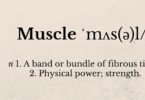Picture this for a minute: you’ve got your new training plan, perfect and unique like a hi-def snowflake, designed by Eastern bloc super-scientists and Olympic legends. You’ve got a nutritional protocol that’s mathematical in its precision, based on the latest research and tailored to your exact needs and goals. You’ve got the gym membership, you’ve bought the shoes. You are ready.
Six months later, you are fatter, slower and weaker than before. You are injured and sore, demotivated and overtrained. You are, by any standard, worse than you were to start with.
Now, here’s the important question:
What the hell happened?
This is a technique that research psychologist Gary Klein, a specialist in naturalistic decision-making, uses with businesses. Klein calls it a ‘Pre-Mortem’, and advises clients to imagine everything that could go wrong with their plans before they even start them. Instead of waiting for disaster to strike, he suggests, you should look at it as though it’s already happened.
How can you apply this to your attempts to get in shape? Here’s the system I’ve come up with:
1. Spend 10 minutes listing everything you think could go wrong
Be honest: and include every single thing. Don’t worry if it’s unlikely, and don’t exclude anything because you think you can avoid it. If something relies solely on willpower, look at it as a huge red flag. Examples? Personally, I love biscuits and hate slow-paced recovery efforts: I have a tendency to get overexcited and pile too much weight on the bar, and I sometimes have to blow off training sessions because of work commitments. I don’t have a huge amount of family commitments, and I’m fortunate that my wife is more into training than me (more on this in a second). Your problems will be different. Just list them: don’t worry about solutions at this stage.
2. Ask two people you respect what they think could go wrong
Ideally, you’ll know people who know you well enough to be honest about your workout-related shortcomings. Ask their opinions: and tell them to be ruthless. If this isn’t practical, just consulting an imaginary figurehead might be enough: in the excellent Dream On, author John Richardson uses a spectral Seve Ballesteros to keep him grounded in his effort to break par on a golf course. I asked my wife (who’s a personal trainer) and a fictional version of Rob MacDonald, the general manager of Gym Jones (who I’ve met IRL three times, and been humbled by every time). As it turns out, pretend-MacDonald is meaner than the real thing, because he knows all my secrets and weaknesses. ‘You like doing strength stuff, but you don’t do enough long-distance cardio, or single-leg work,’ was his (imagined) advice. ‘Sometimes you don’t go hard enough on endurance efforts. And you don’t drink enough water.’ My wife’s advice? ‘You drink too much beer, and you stress-eat when you’re working too hard, which you’re going to be doing a lot in the next few months.’ Solid.
3. Triage your problems
There’s no point worrying about everything. At this stage, take your list of problems and get rid of the ones that are a) Unlikely or b) Impossible to do anything about. If you get hit by a bus or fired from your job, your priorities are going to shift away from your front squat: that’s unavoidable. Pick mission-critical problems that are actually likely to make a difference: the stuff that you were secretly worried about that’s now out out in the open. Cut it down to a Top 10.
4. Spend 30 minutes creating solutions
This is worth more than any 30 minutes you’ll ever spend in the gym. If it helps, divide these into proactive solutions (ie, things you can do now) and backup plans. A proactive solution, for instance, might be buying a jar of natural peanut butter to stave off terrible on-the-go snack choices, or (for me) committing to posting all my endurance efforts online to keep them honest. A backup plan might be ‘If I can’t manage an hour in the gym four days a week, I’ll do [X] bodyweight circuit at home to replace a session.’ Plan that session and buy that peanut butter now, not when you’re low on willpower. This is what’s going to keep you on track.
Einstein once said: ‘If I had only one hour to save the world, I would spend fifty-five minutes defining the problem, and only five minutes finding the solution.’ Before you next commit to a three-month stint in the gym, spend an hour making sure you’ll succeed there.








Leave a Comment